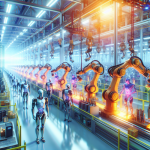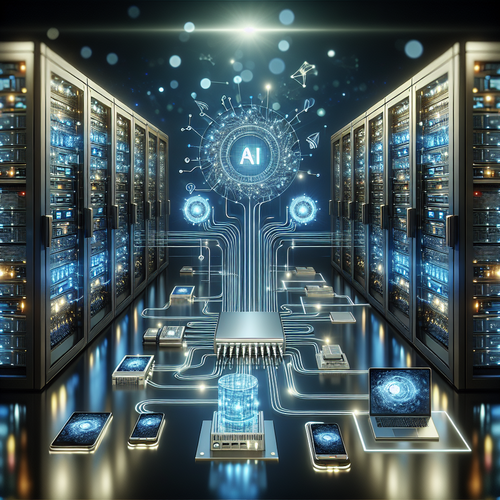
Investment in Manufacturing & R&D Jobs for Semiconductor & AI Supply Chain
Investment in Manufacturing & R&D Jobs for Semiconductor & AI Supply Chain
The world is currently undergoing a significant technological transformation, where the integration of artificial intelligence (AI) and semiconductors is driving economic growth. This tutorial will delve into the dynamics of investment in manufacturing and research and development (R&D) jobs within the semiconductor and AI supply chains. We will analyze current trends, challenges faced, and strategic directions that businesses can adopt for future growth.
Prerequisites
- Basic understanding of semiconductor technology.
- Familiarity with AI concepts and applications.
- Knowledge of manufacturing processes and supply chain management.
Understanding the Importance of Investments
Investments in manufacturing and R&D are crucial for advancing technologies related to semiconductors and AI. These investments not only boost innovation but also enhance the overall competitiveness of industries. According to industry reports, the semiconductor market is projected to reach $1 trillion by 2030, driven by increasing demand for AI-capable devices.
Key Areas of Investment
- Manufacturing Infrastructure: Modernizing manufacturing facilities to adopt automation and smart technologies.
- Research and Development: Fostering innovation through dedicated R&D centers focusing on new semiconductor materials and AI algorithms.
- Workforce Development: Investing in training programs to equip professionals with the skills required in a tech-driven ecosystem.
Steps to Invest in Manufacturing & R&D Jobs
To harness the potential of semiconductor and AI technologies, follow these strategic steps:
1. Conduct a Market Analysis
Begin by analyzing market trends and identifying areas ripe for investment. A focus on emerging technologies will help steer investment towards sectors with the highest return potential.
2. Build Strategic Partnerships
Collaborate with educational institutions, government agencies, and private sectors to foster innovation and development. Partnerships can also facilitate knowledge sharing and resources.
3. Enhance Manufacturing Capabilities
Invest in state-of-the-art manufacturing technologies that integrate AI for process optimization and efficiency. Implementing smart factories can significantly improve production rates and reduce operational costs.
4. Prioritize R&D Ventures
Allocate budget for R&D with a focus on developing advanced semiconductors capable of supporting AI functionalities. This can involve exploring novel materials, architectures, and methodologies.
5. Foster Talent Development
Establish training programs and workshops to create a skilled workforce adept in semiconductor and AI technologies. Collaboration with universities can facilitate curriculum development that meets industry needs.
6. Monitor Industry Regulations
Stay updated with regulatory frameworks affecting the semiconductor and AI industries. Compliance with these regulations can help mitigate risks associated with investments.
Troubleshooting Common Challenges
While pursuing investments in these fields, companies may face several challenges:
- Supply Chain Disruptions: Develop flexible and resilient supply chains to address potential disruptions.
- Cost Management: Regularly review finances to ensure sustainable investments while maximizing ROI.
- Technological Advancements: Stay informed about technological developments to avoid being outpaced by competitors.
Summary Checklist
- Conduct market analysis to identify investment opportunities.
- Build strategic partnerships to enhance innovation.
- Invest in advanced manufacturing technologies.
- Prioritize R&D initiatives for AI-enhanced semiconductors.
- Foster training programs to develop necessary workforce skills.
- Monitor industry regulations continuously.
For more insights on economic trends in technology, don’t miss our post on Exploring the Expansion of Data Centres Driven by AI Investments.
Conclusion
Investment in manufacturing and R&D jobs within the semiconductor and AI supply chains is not just necessary; it is vital for fostering innovation and sustaining economic growth. By adopting strategic approaches as outlined, businesses can effectively position themselves to thrive in this rapidly evolving landscape.














